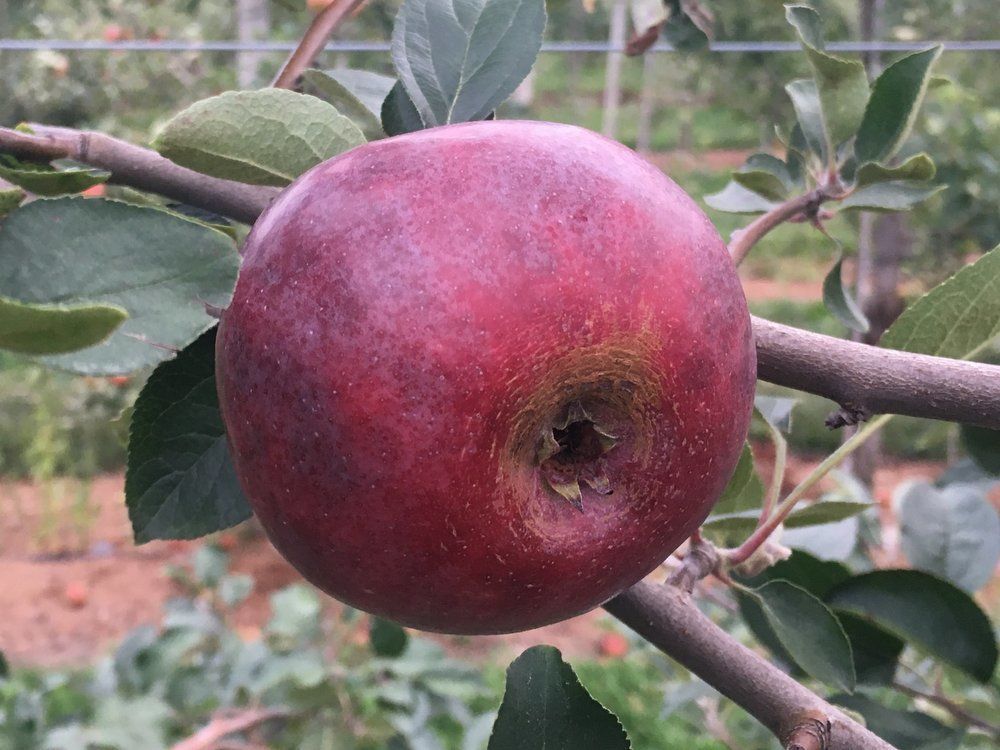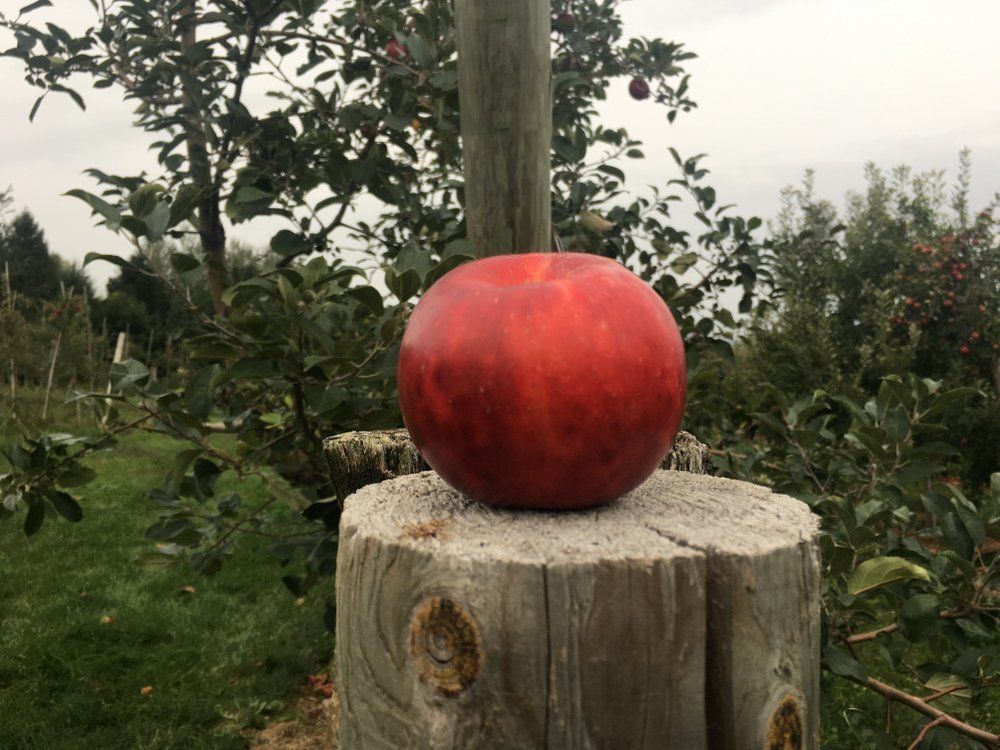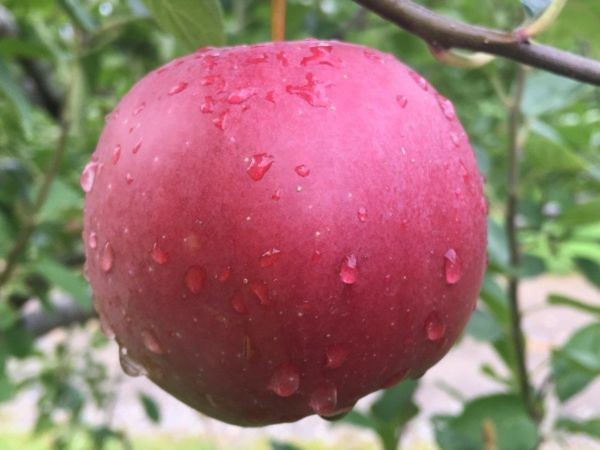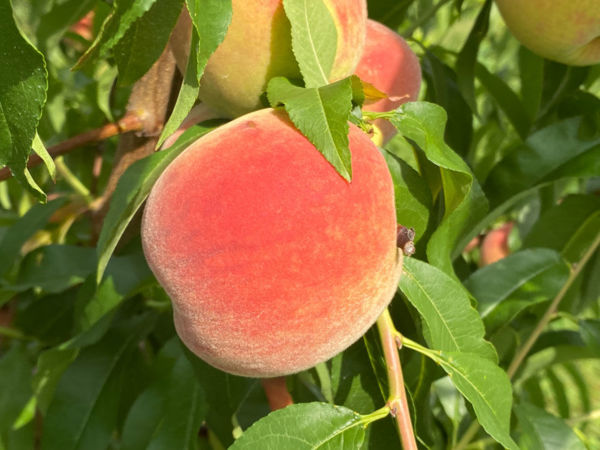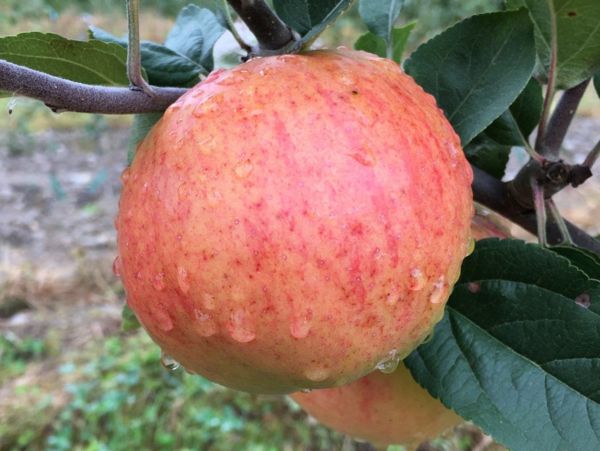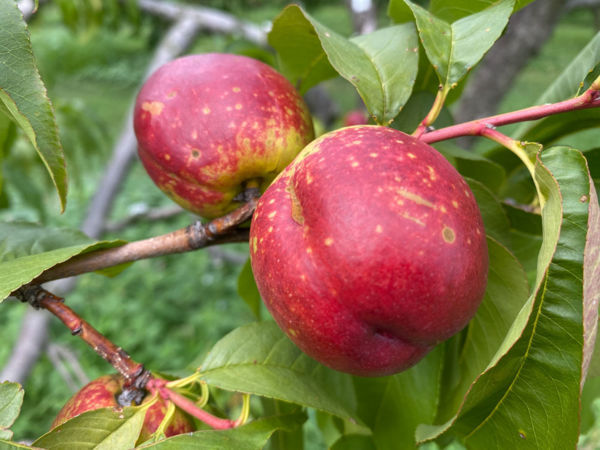An attractive, highly disease-resistant apple, ideal for organic growers.
Gravenstein Apple on G.214 (Spring 2025)
You are viewing a tree that will ship in Spring 2025. You can also find trees for Spring 2024.
A beloved heirloom apple from Europe. Also known as Early Congress, Graff Stein, Grave Slije, Ohio Nonpareil.
Like many of the best apples, Gravenstein is difficult to grow. This is partly because it predates modern breeding programs that have selected apples for disease resistance, but it also has some tricky special features that growers must take into consideration. Gravenstein is both triploid and very early blooming. Two diploid pollenizers will need to be present for full pollination, and these should have bloom times that overlap with that of Gravenstein. It should be well pruned and thinned to maintain annual bearing. Otherwise, this tree is large, wide spreading, vigorous, and long-lived. It is susceptible to fireblight, powdery mildew, butter pit, and scab, but very resistant to cedar-apple rust.
The apple is fairly large with a thin skin that is sliced by distinct ragged stripes of red over yellow. The yellowish flesh is firm and fine-grained but very tender and easily bruised. This apple does not store for any appreciable length of time. Gravenstein is sweet-tart. Tasters rave about the honeyed, aromatic flavor, and in Apples of New York, Beach says: "For culinary purposes it is perhaps unexcelled by any apple of its season." (From WSU for Red Gravenstein: "Tannin (percent tannic acid): 0.07; Acid (percent malic acid): 0.56; pH: 3.49; SG: 1.052; oBrix 12.6.")
The origin of this apple is slightly obscure. From Bussey's Illustrated History of Apples in the United States and Canada: "Possibly originated in the garden of the Duke of Augustenberg, Castle of Graefenstein, Schleswig-Holstein (in the far north of Germany), but according to others it was an apple called Ville Blanc that originated in Italy or southern Tyrol and was sent to Schleswig-Holstein. Also there are reports that scions from Italy were sent home by the brother of Count Chr. Ahlefeldt of Graasten Castle in South Jutland (an area even farther north of Germany that is now part of Denmark). Said to have arrived in Denmark about 1669." Gravenstein is now the national fruit of Denmark, and in 2012, Slow Food USA added Gravenstein to its "Ark of Taste."
The Fruit
Fruit Type
Category: Apple
Subcategory:
Heirloom, Cider, Hot-Climate
Fruit Uses & Storage
Uses: fresh eating, cider, baking
Cider classification: sharp
Storage duration: less than one month (approximate, depending on storage conditions)
Fruit Appearance
Skin color: red
Flesh color: yellow
Fruit Origins
Parentage:
Origin: Germany or Italy
Introduced in: 1600s
Introduced by:
The Environment
Calendar & Geography
USDA zones: 5 - 8
Chill hours: 700
Ripening date: Aug 25 (approximate, in New York State) 21 days before McIntosh
Tree Height & Spacing
glossary
Rootstock: G.214 Rootstock
Rootstock size class: Dwarf (30% of Standard)
Tree spacing (natural spread of tree): 8'
Good for wildlife planting? N
Diseases & Pests
glossary
Fireblight: Susceptible
Powdery Mildew: Susceptible
Apple Scab: Susceptible
Cedar-Apple Rust: Very Resistant
Bitter Pit: Very Susceptible
Pollination
Pollination Factors
glossary
Bloom group: 1
Is it self-fertile? N
Is it fertile? N
Ploidy: Triploid
Rootstock size class:
Dwarf (30% of Standard)
Pollination Partners
This table shows the first few results from a full search for pollenizers of Gravenstein Apple on G.214. Please see our Pollenizer Search to run other queries and read how the application uses various factors. Also read more about fruit tree pollination.
See all pollination matches for Gravenstein Apple on G.214
Featured Products
A few things we're loving right now...
A full-flavored, freestone white peach.
A traditional semisharp cider apple from Spain.
A widely-grown, large, yellow-fleshed nectarine.









